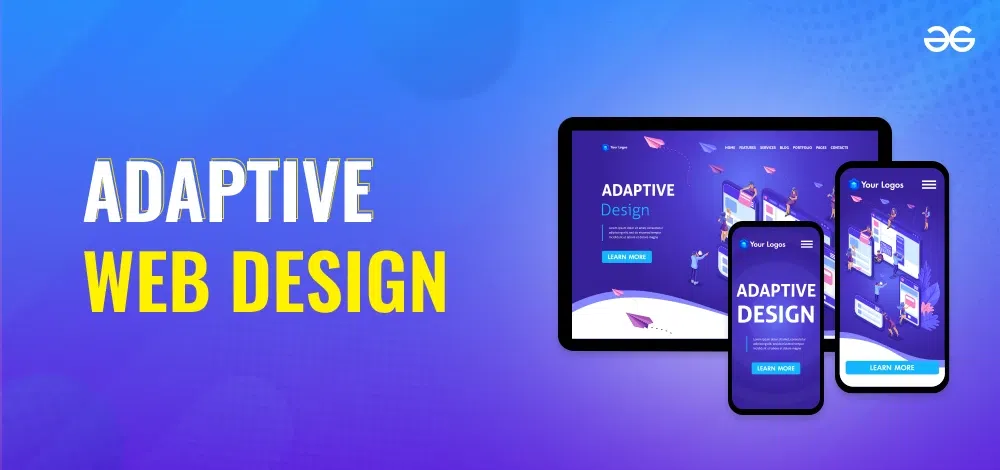What is Adaptive Web Design?
Last Updated :
23 Feb, 2024
Desktops, mobiles, tablets, laptops, etc., all are important nowadays. But at present, people generally use mobile phones more than anything. To view websites, people mostly use mobile phones rather than laptops or desktops. Therefore, any business needs to build a website that should be easy to view on a mobile device and also look great. If a website does not open properly and easily on a small device, then there are chances that you might lose your customer and this will reduce the number of audiences to the website.

What is Adaptive Website Design?
Adaptive websites are generally designed to adapt to only specific screen sizes. It uses two or more versions of websites such as mobile version, desktop version, etc. to fit best on different screens. In an adaptive web design, one designs multiple layouts of the same website to fit best on a specific screen size. These multiple layouts are designed for multiple screen sizes. Whenever a visitor user or customer opens the adaptive website, an adaptive website first determines the dimensions of the visitor’s screen, then depending upon screen size chooses the most appropriate layout that will fit the best on-screen size. Though, this website is more complex, difficult, and expensive, but is considered the best way to reach more audiences.
Importance of Adaptive Web Design
The adaptive website simply detects the type of device it is viewed on and then provides a pre-set layout for the device to fit best on screen. It is the best way to make the website mobile-friendly. It ensures the best user experience according to whatever device the user is using to view the website. These websites are easy to create. The adaptive layout is not decided by the client or browser, in fact, it is determined on the back-end where the server determines the type of device and operating system and then correct the layout. It also loads faster than responsive websites. This is because adaptive design transfers only essential assets particular to each device type. It not only increases user experience but also provide cross-browser and cross-device compatibility.
When to use Adaptive Web Design?
Adaptive web design makes different layouts for different screen sizes. It is simply like having two different website versions, one is designed to fit best on small screen I.e., mobile or tablet, and the other are designed to fit best on large screen I.e., desktops or laptops. But still, some people get confused in deciding when to use adaptive web design. Below given are some points to clear this confusion:
- Adaptive web design is best for existing websites that are much complex and tough to maintain. These websites require another version for mobile devices. The complex design of the past is nowadays reduced by adopting an adaptive web design that makes the website less complex, effective, and user-friendly.
- Adaptive web design is best for speed-dependent sites. Web-users also like to save time and prefer faster loading of pages because it increases user experience. Adaptive web design creates a different version of websites for different devices so that there is no problem in navigation and increases loading speed of pages.
- Adaptive web design is best for some websites that are smaller and wants to preserve their resources. This is because adaptive websites are easy to create and require fewer resources.
Benefits of Using Adaptive Web Design
Following are some Advantages of Adaptive Web Design:
Can Target Every User:
- Since different versions of websites are made for different screen capacity we can target different users to increase their user experience at individual devices.
Increases Loading Speed:
- Since the websites are divided for different devices the traffic on the website decreases and increases the load speed.
Reusable existing websites:
- Some of complex websites are developed using legacy code i.e., source code written using outdated technology or is no longer supported and is incomprehensible.
Advertising monetization:
- Monetizing the websites is a great way to earn money. And since adaptive website are made for different device sizes adjusting spacings for ads and banners.
Conclusion
Using Adaptive websites can be helpful in many cases that can help a brand to establish and promote themselves. People on different devices can access different verions of website that can give them the best user experience for that design. But it should also be taken into consideration that adaptive websites can be costly and complex to build and maintain.
Share your thoughts in the comments
Please Login to comment...